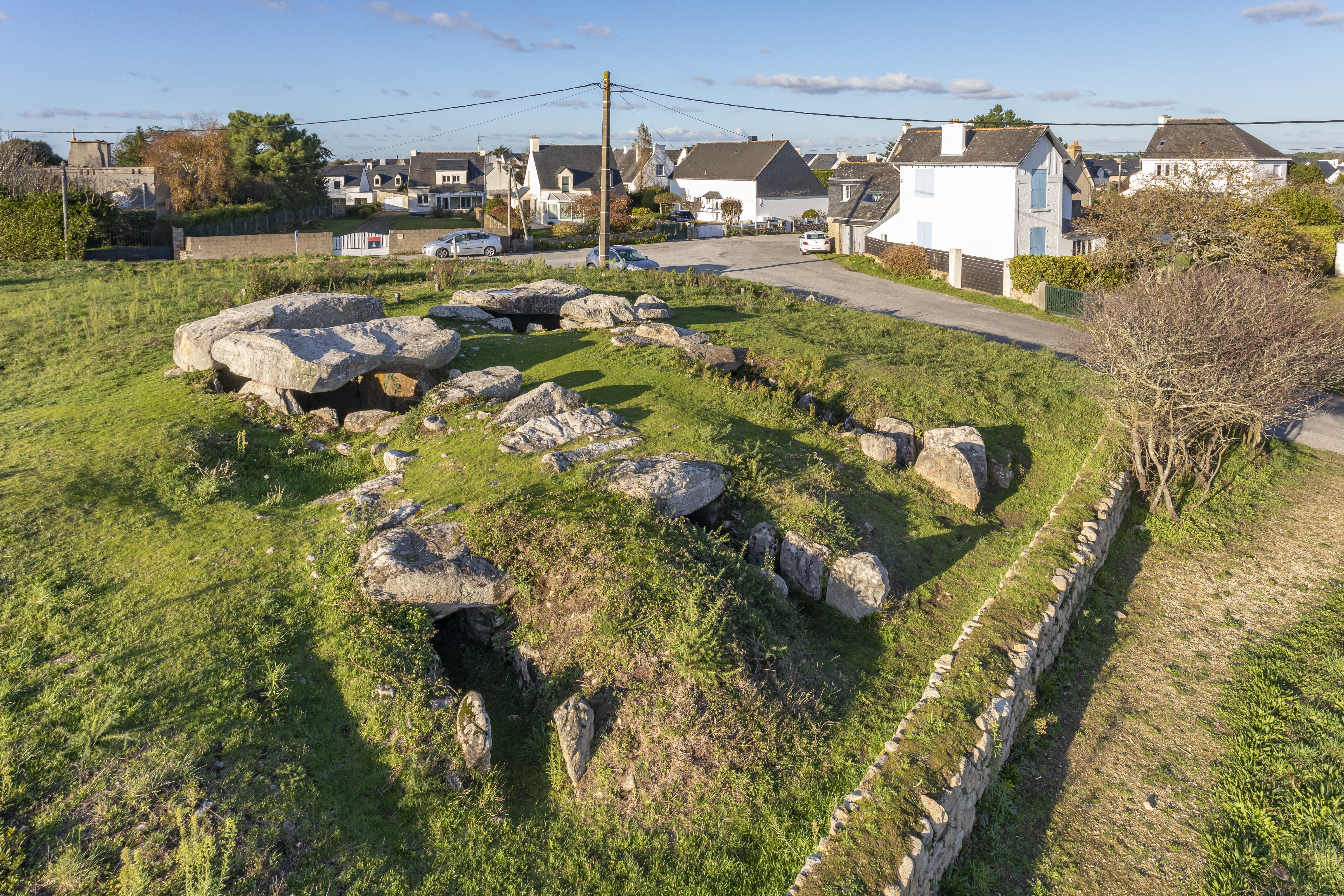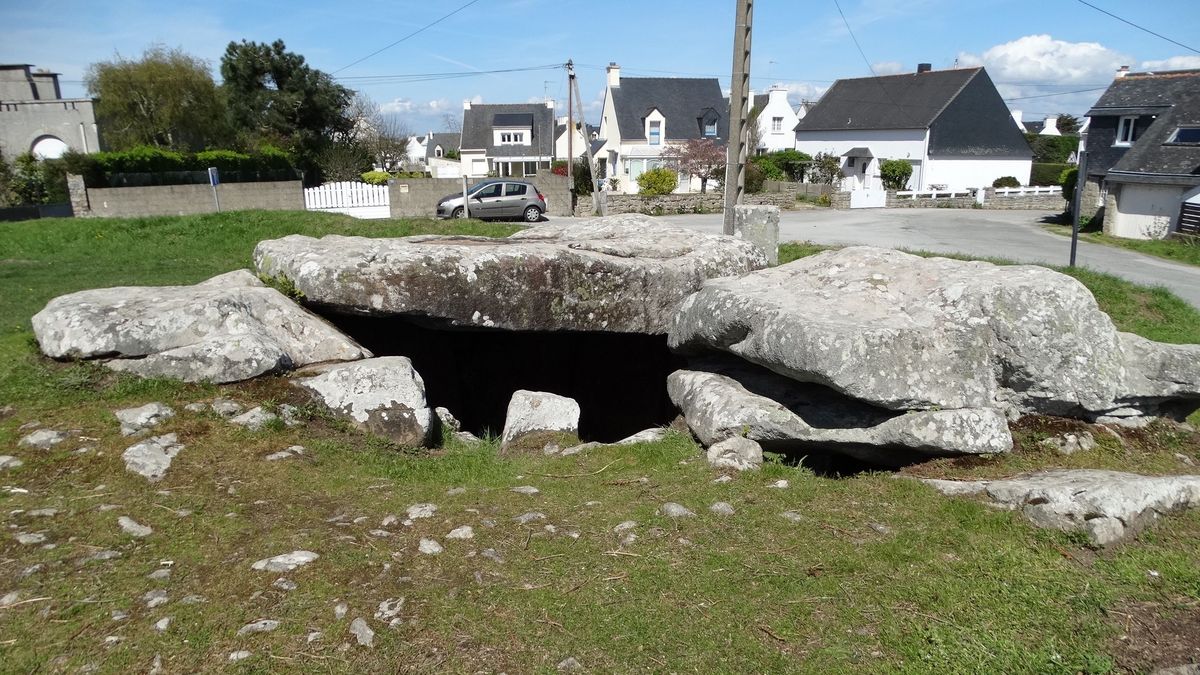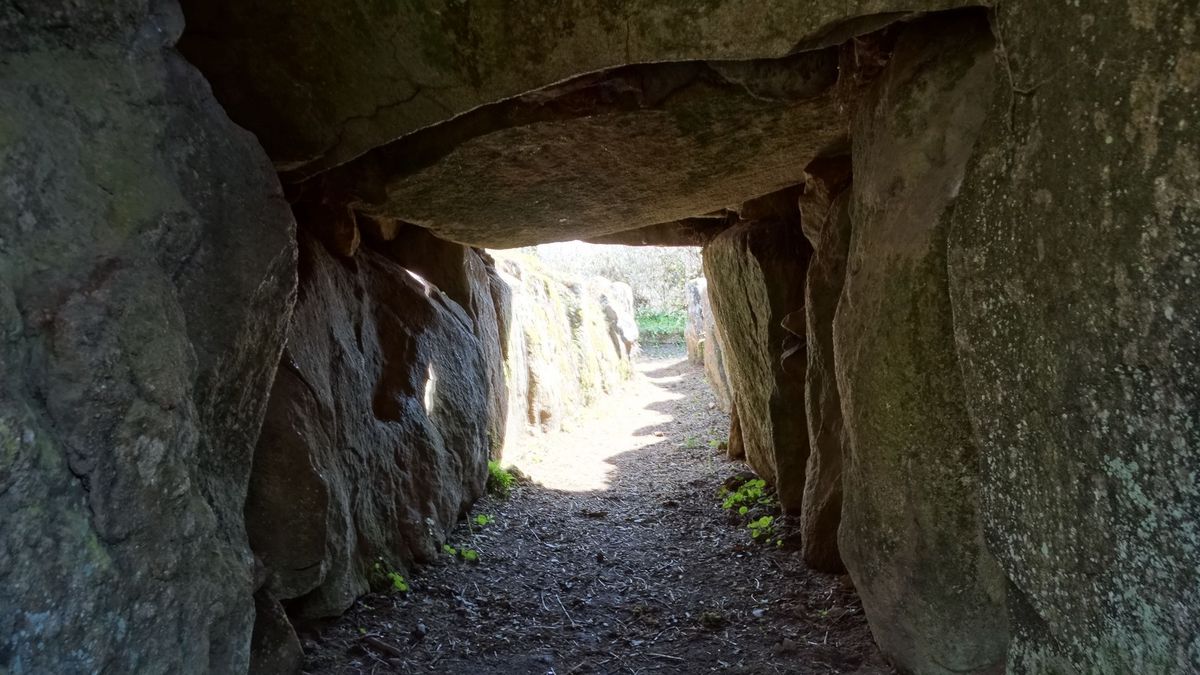Situated in what is now a built-up area in the village of Plouharnel, this large tumulus, 2 metres high, 30 metres long, and 20 metres wide covers no fewer than three ‘passage dolmen’ burial structures. It has been a listed historic monument since the nineteenth century, when it became the property of the French state, and was excavated several times.
The first written information about the Rondossec dolmens dates back to 1849. At that time, Mr Le Bail, Mayor of Plouharnel, undertook an excavation of the tumulus, where a few stones were visible on the surface. During digs, two pieces of gold jewellery were discovered, indicating that the site was reoccupied during the Bronze Age. The discovery caused quite a stir, and made the monument famous. The pieces of jewellery in question are now preserved at the Saint-Germain-en-Laye National Archaeology Museum.
In a report in 1921, Zacharie Le Rouzic stated that he had re-erected and consolidated the dolmens’ support stones. To further enhance this outstanding site, the surrounding area has recently been landscaped by the French state and the Auray Quiberon Terre Atlantique district council, making it easier to grasp the architectural layout as a whole, and see it in its context.


